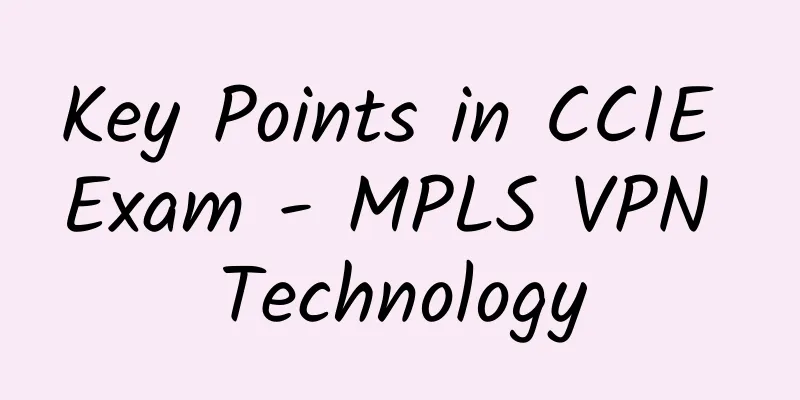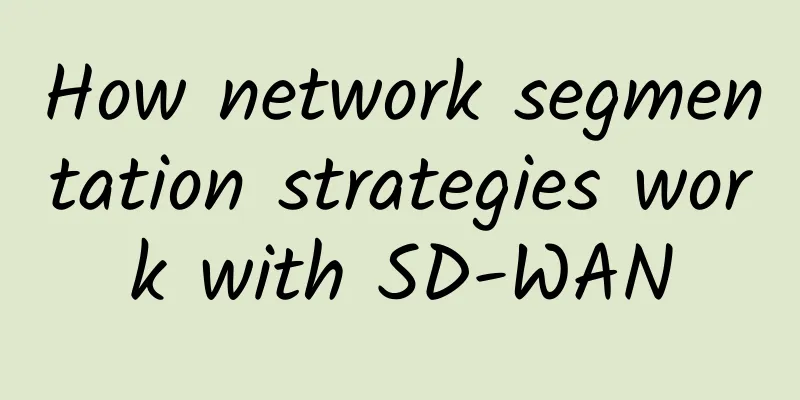Key Points in CCIE Exam - MPLS VPN Technology

|
MPLS VPN technology is a key point in the CCIE exam. Does it have practical uses in real networks? Can these technologies be implemented in practice? Can MPLS VPN technology improve your job search? Routing comes first, then data 1. Briefly explain what MPLS VPN is MPLS VPN technology has been deployed since 2002, but after decades of development, a set of methods have been formed to implement and maintain this technology. MPLS VPN can actually be divided into MPLS and VPN technologies. MPLS VPN refers to multi-protocol label switching technology. VPN is isolated at the routing level. MPLS VPN can be understood as multi-protocol label switching technology isolated by routing. 2. What effects can MPLS VPN achieve? On the premise of a set of physical hardware, the routing tables are separated according to different services, and the routing tables of each business network run independently. (1) MPLS VPN Design
(2) Address planning
The three types of addresses should not be repeated because they have different purposes. Knowledge point: Understand the differences between physical address, loopback address and business address;
(3) IGP routing planning Protocol Design Topology Network point: The network point design uses multi-area segmentation to reduce LSA flooding; Cities:
Knowledge point: OSPF design needs to take into account the SPF algorithm calculation problem caused by LSA flood prevention
(4) BGP Planning In BGP VPNV4 planning, we need to determine the roles, PE as the egress of traffic, P device as part of the pipeline, and RR device route reflection to neighbors;
Knowledge point: MPLS VPN planning, we need to know the role of each role
Routing in MPLS VPN goes through several processes:
3. Understanding MPLS VPN (1) Routing and data We need to discuss MPLS VPN from two aspects, the routing level and the data level; the routing tag is divided into rd and rt values, and the data level is divided into inner and outer labels; (2) How to understand rd and rt To split the routing table into several parts for transmission, first mark the corresponding routing table to distinguish the routing table;
(3) How to understand double-layer labels Labels are divided into inner and outer labels
|
<<: SD-WAN is about to dominate edge networks
>>: Although there are nearly 100 5G terminals, they are not even the tip of the iceberg.
Recommend
Attention! Eight pitfalls in managing integrated cabling systems
After nearly 20 years of development, the integra...
Which bare metal cloud service provider is the best? Huawei Cloud is happy
[51CTO.com original article] A few years ago, whe...
Amazing, TCP/IP service protocol, network topology summary
Network topology (Tpology) Topology refers to the...
IKIHOST: $4/month-4GB/40G NVMe/1Gbps unlimited traffic/Los Angeles data center
The tribe shared information about IKIHOST last y...
Ruijie Networks Creates China's First Wireless Office Wi-Fi for "Medical Innovation Space"
In the "Precision Medicine Baccarat" pu...
The full implementation of number portability is about to reach its first anniversary, and the winner may be different
On August 5, 2019, number portability entered the...
2G network withdrawal encounters new resistance, and most of the existing IoT is based on 2G network
Currently, operators are actively migrating 2G us...
Revolutionizing Networking with Edge Computing
Compared with cloud computing, edge computing foc...
Huawei's Shi Yaohong: The new infrastructure focuses on "foundation" to enable intelligent upgrades in thousands of industries
New infrastructure (i.e. new infrastructure const...
Where does the power of high-performance 5G core network come from?
The core network is the brain of the entire commu...
Challenging the NB-IoT and LoRa market? A new round of competition in the LPWAN field
In recent years, the IoT industry has reached a c...
edgeNAT Double Holiday Promotion: VPS special price starting from 199 yuan per year, 30% off for regular monthly packages and 40% off for annual packages
edgeNAT has just released a promotional event dur...
F5: Hybrid cloud architecture behind the "Double Eleven" carnival
The total sales volume of the entire network reac...
Microsoft drops OneDrive sync support for older versions of macOS
On August 8, Microsoft announced that they will d...
The three major operators have invested 477.2 billion in 5G, unleashing the power of the digital economy engine
In fact, 2022 is another peak year for 5G investm...









